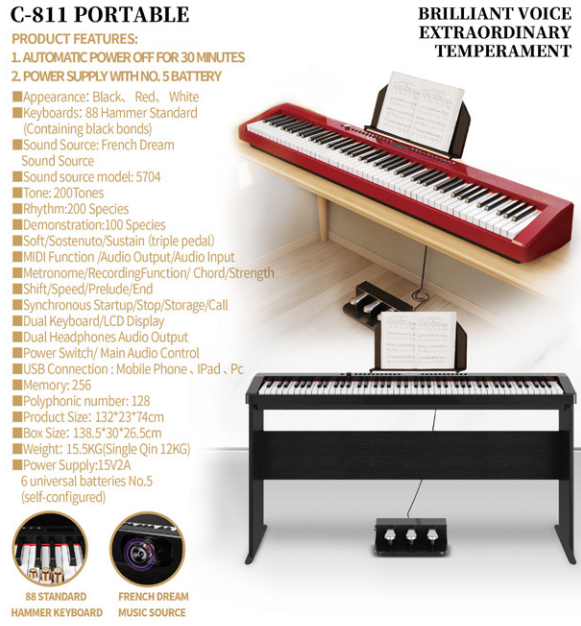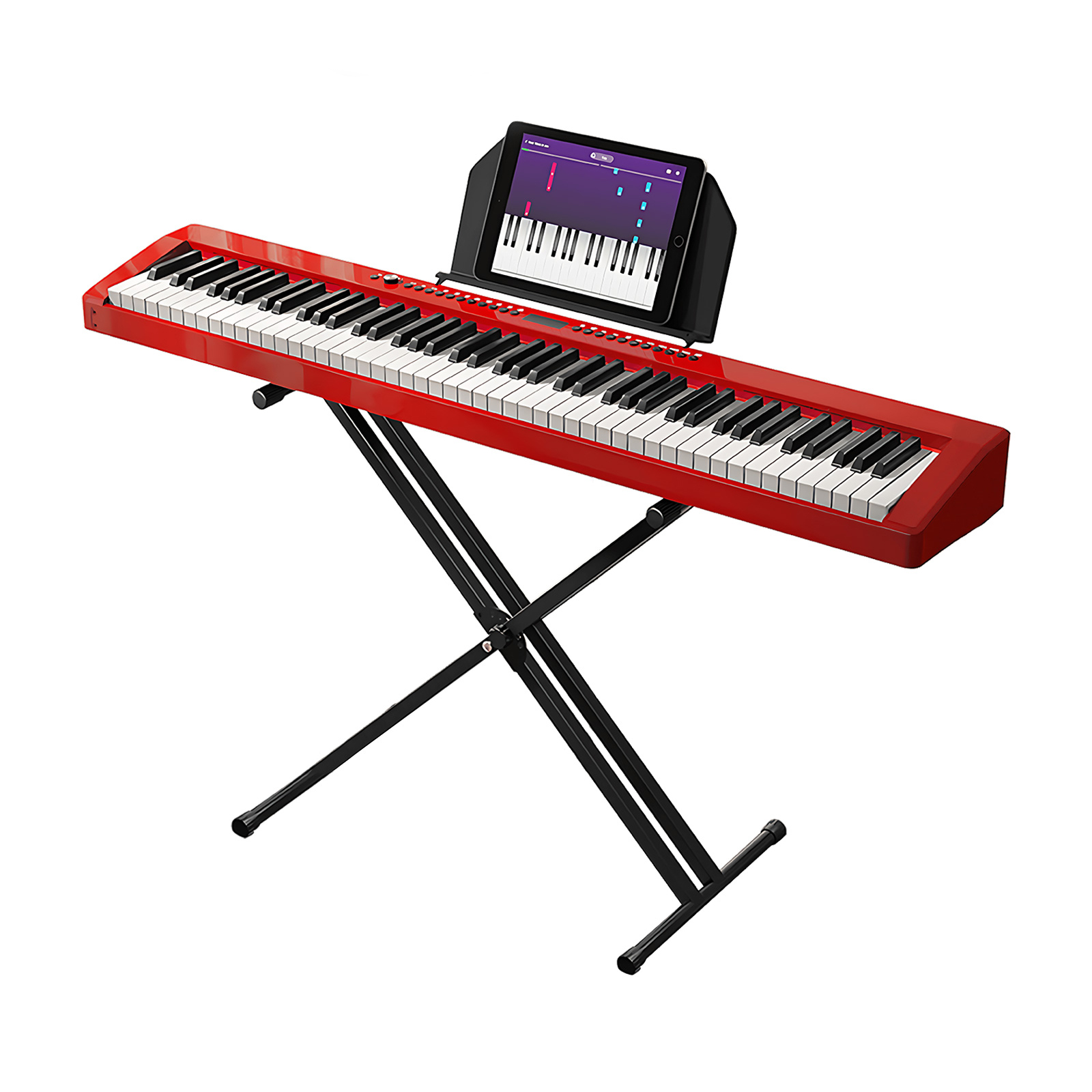Why Digital Pianos Are a Cost-Effective Alternative to Traditional Pianos
When comparing digital pianos to traditional acoustic pianos, one of the most significant advantages is cost-effectiveness. Digital pianos are generally more affordable than their acoustic counterparts, making them an excellent choice for beginners, professionals, and music enthusiasts alike. The affordability of digital pianos is due to factors such as lower production costs, the absence of expensive wood materials, and the elimination of manual craftsmanship required for acoustic pianos.
Additionally, purchasing a traditional piano involves not just the initial cost but also ongoing expenses such as tuning, maintenance, and repairs. Digital pianos, on the other hand, do not require frequent tuning, significantly reducing the long-term costs associated with ownership.
No Need for Regular Tuning and Maintenance
Unlike acoustic pianos, which require professional tuning at least twice a year, digital pianos never go out of tune. Traditional pianos rely on strings and wooden soundboards, which expand and contract with changes in temperature and humidity. This natural movement causes the piano to drift out of tune over time.
In contrast, digital pianos use sampled sounds and digital synthesis, ensuring that each note remains perfectly in tune indefinitely. This feature alone makes digital pianos a preferred option for musicians who want a hassle-free playing experience without worrying about regular tuning services.
Lower Long-Term Costs and Higher Durability
With a traditional acoustic piano, wear and tear can lead to expensive repairs. Strings can break, hammers wear down, and wooden components can crack due to environmental factors. Additionally, keeping an acoustic piano in top condition often requires professional servicing and sometimes even full refurbishments after a few decades of use.
On the other hand, digital pianos have fewer moving parts and do not require costly internal repairs. Most digital pianos last for many years with minimal maintenance. Cleaning the keys and ensuring proper storage conditions are usually sufficient to keep a digital piano functioning optimally.
Portability and Space Efficiency
Traditional pianos, especially grand and upright models, are large and heavy, often weighing several hundred kilograms. Moving an acoustic piano requires professional assistance and can be costly.
Digital pianos, however, are lightweight and compact, making them easy to transport and store. Some models can even be folded or disassembled for easy transportation, allowing musicians to take them to gigs, rehearsals, or lessons without difficulty. This portability makes digital pianos an attractive option for students, professionals, and anyone with limited living space.
Advanced Features and Versatility
Another major benefit of digital pianos is their modern technology and built-in features. Unlike acoustic pianos, digital pianos offer:
- Multiple instrument sounds – Play not just piano sounds but also organ, strings, electric piano, and more.
- Recording and playback capabilities – Record performances for practice or composition purposes.
- Headphone connectivity – Practice silently without disturbing others.
- MIDI compatibility – Connect to computers, DAWs, and music software for composing and recording.
- Adjustable volume control – Play at different sound levels depending on the environment.
These features make digital pianos highly versatile, allowing musicians to explore various musical styles and settings.
Sustainability and Environmental Considerations
Acoustic pianos are typically made from high-quality wood, including spruce, maple, and mahogany, contributing to deforestation and resource depletion. Additionally, many older acoustic pianos contain ivory keytops, which raise ethical concerns.
Digital pianos, on the other hand, are primarily constructed from synthetic materials and require fewer natural resources to produce. Since digital pianos do not rely on wooden soundboards and strings, they contribute to sustainability and environmental conservation in the music industry.
Ideal for Beginners and Learners
For beginners, digital pianos provide a cost-effective and user-friendly learning experience. Many digital models include:
- Built-in metronomes to help with rhythm and timing.
- Guided lessons and tutorials for self-paced learning.
- Light-up keys to assist with note recognition.
- Connectivity to learning apps for interactive practice.
These tools make it easier for students to develop their skills without requiring an expensive traditional piano or professional tuning services.
Digital Pianos Offer Superior Value and Convenience
When weighing the pros and cons of digital pianos vs. traditional pianos, the advantages of digital pianos are clear. They are more affordable, require little to no maintenance, offer advanced features, and are highly portable. Whether you’re a beginner, an experienced musician, or someone looking for an easy-to-maintain instrument, a digital piano is an excellent choice.




